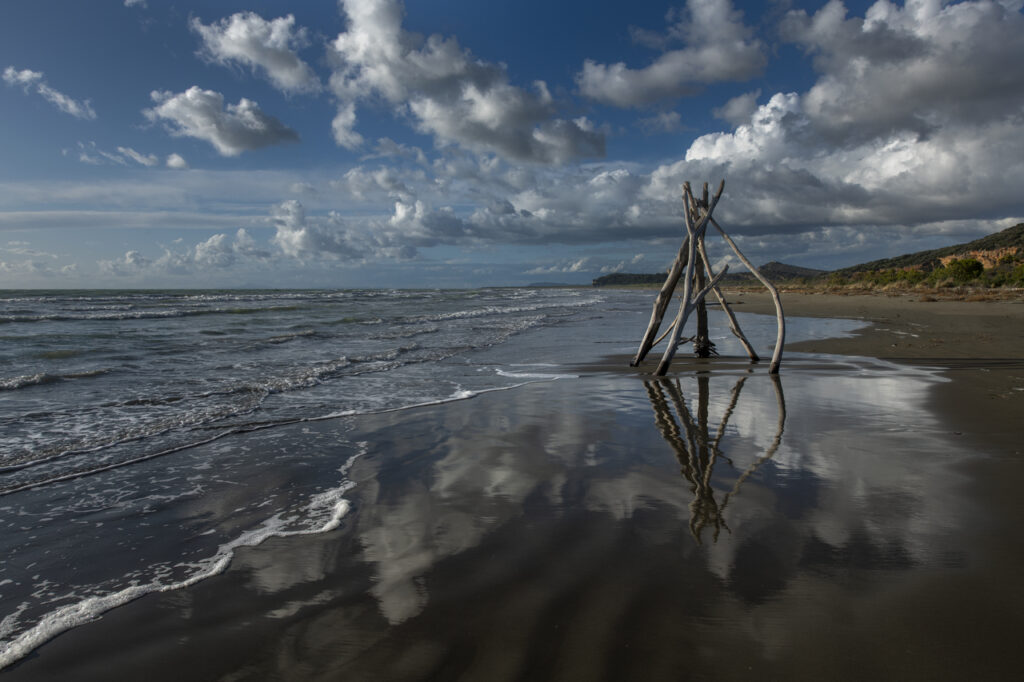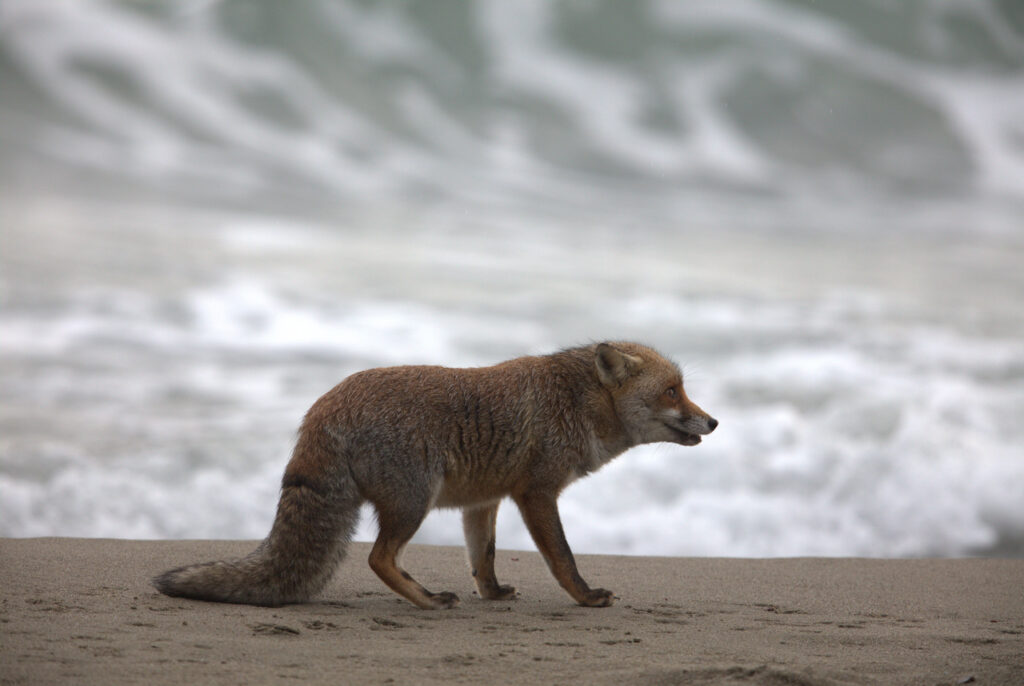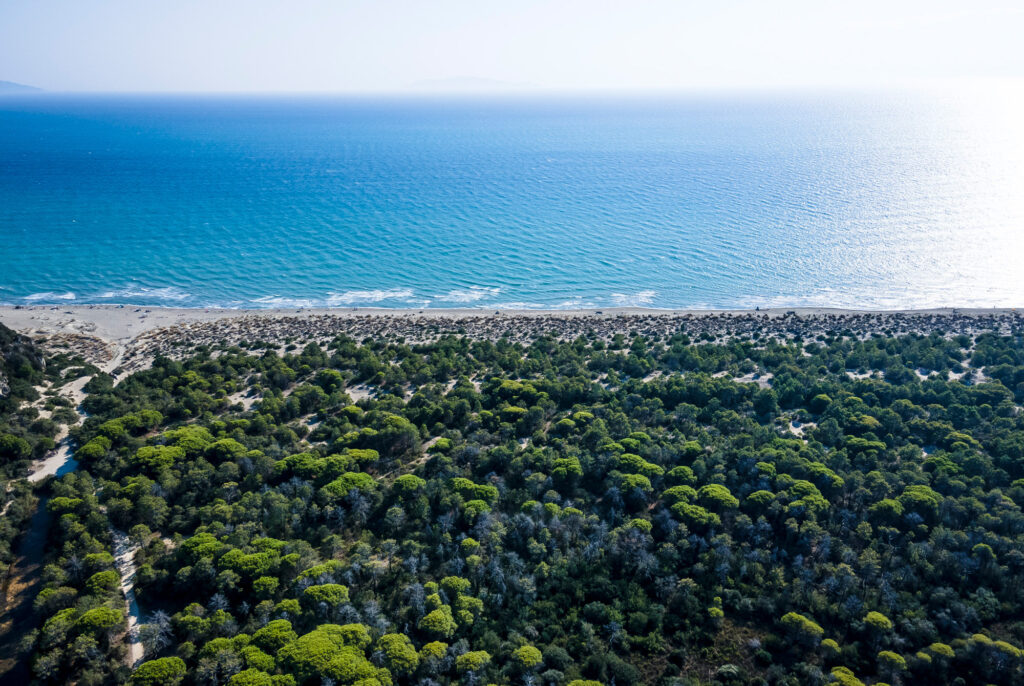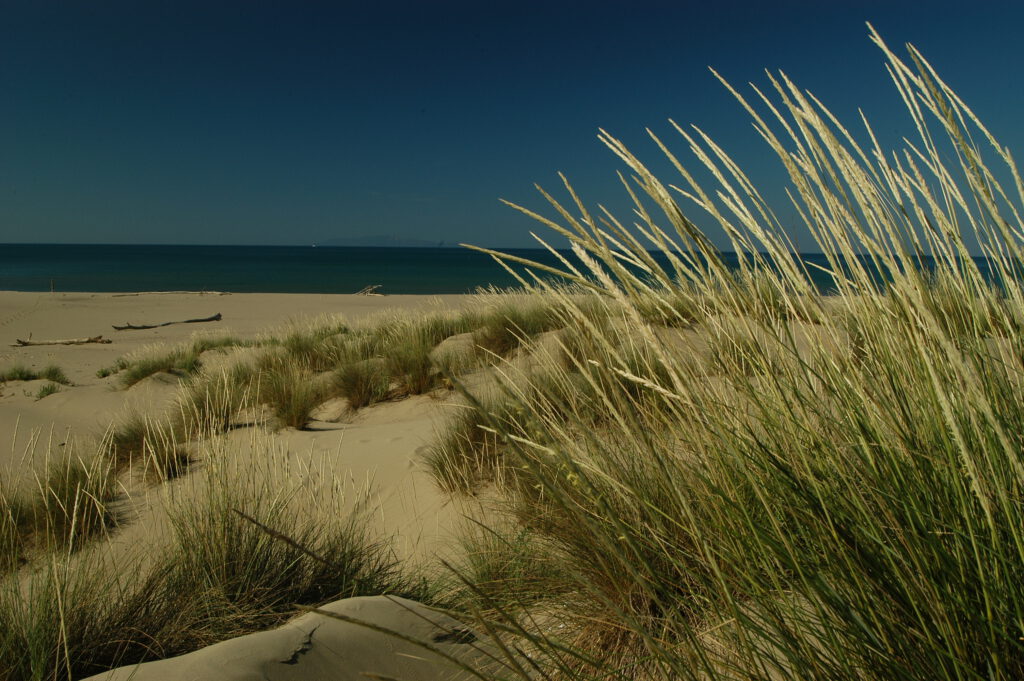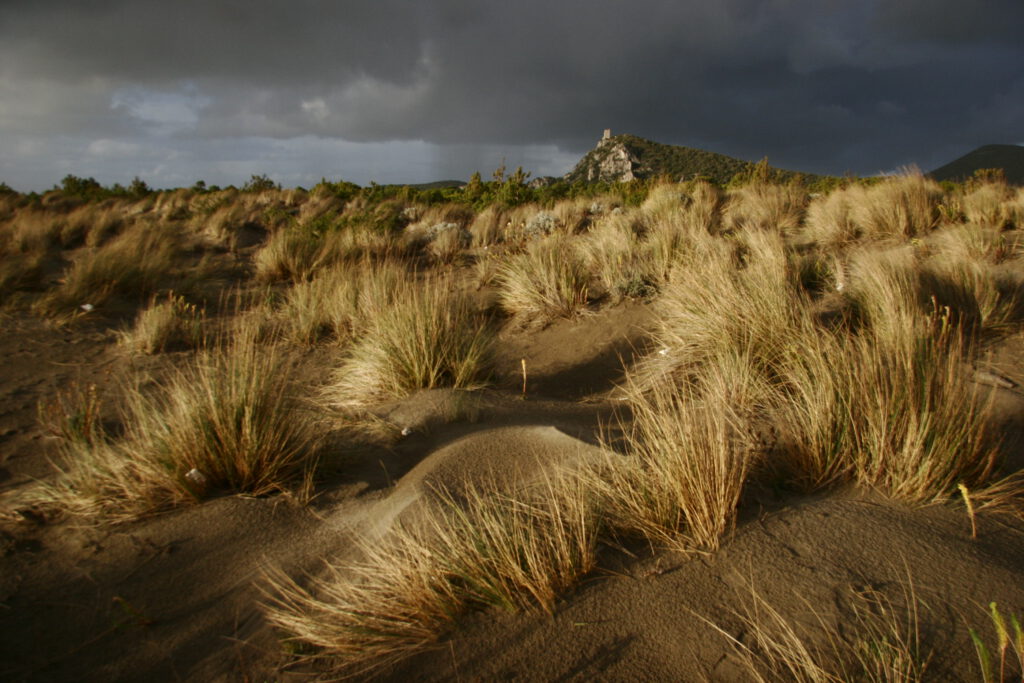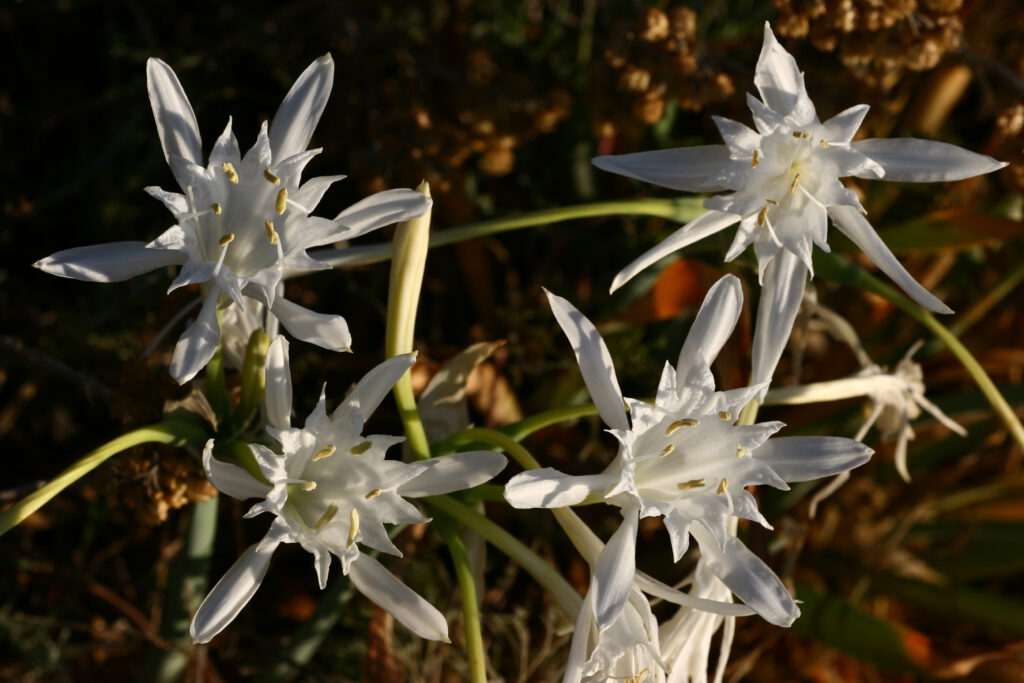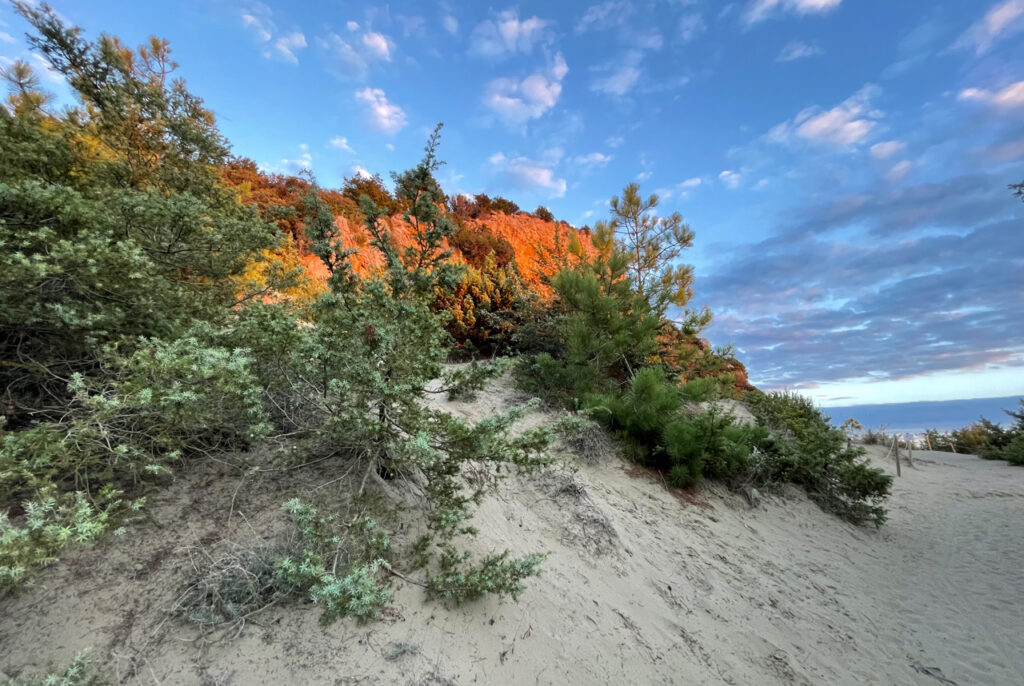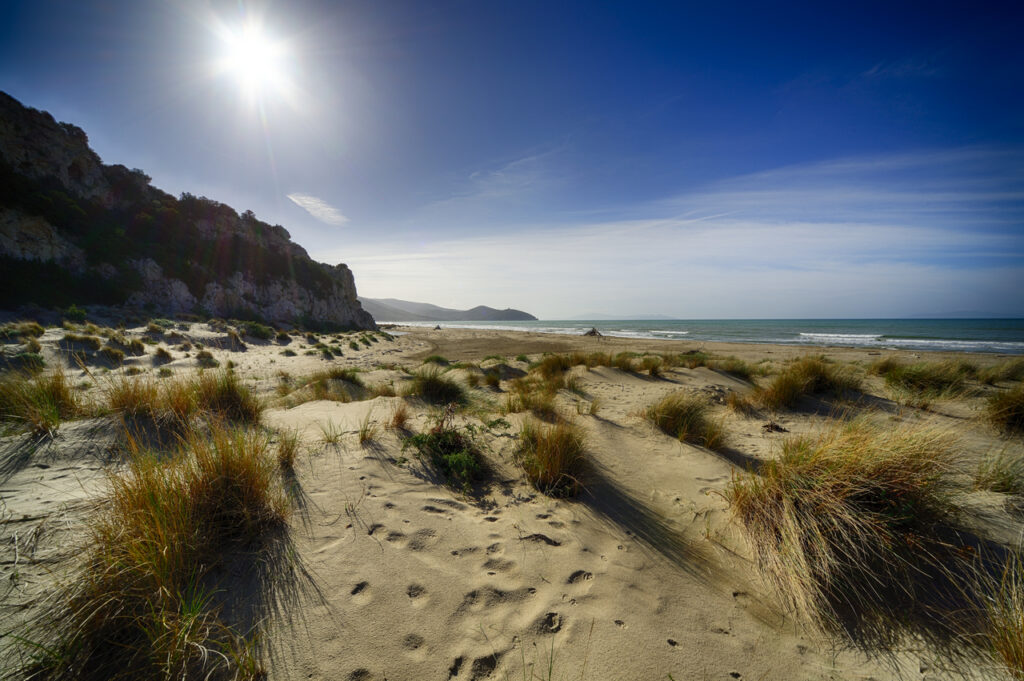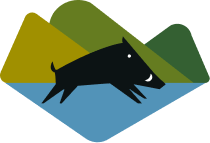An ever-changing environment
We owe the existence of this beautiful beach to the Ombrone river, the low coast, and the work of man. All’Ombrone, because it brings the sand that its waters have eroded from the rocks of the Sienese Chianti, Val d’Orcia and Crete, especially during the great winter floods. To the low coast, because it allows the accumulation of sand redistributed along the coast by coastal marine currents, sand which the wind then accumulates on the dunes. To the work of man, because such strong erosion has been made possible over the last three thousand years by the cutting of forests to obtain wood, fields and pastures. Even today, the Ombrone brings about 18 million tons of sediment to the sea every year.
However, the beach as we see it today is not like that of yesterday.
Over the course of the twentieth century, the arrival of sand from the Ombrone has been decreasing due to the regrowth of forests in the hinterland, the collection along the river as building material, and the construction of barriers that stop it before it reaches the sea. Thus, after centuries of advancement, during the twentieth century the mouth of the Ombrone began to retreat, dismantled year after year by storm surges. The erosion of the mouth by the sea is now slowed down by a series of coastal protections. The sea currents have therefore reshaped the beach south of the Ombrone mouth: while the stretch between the mouth and the Collelungo tower has narrowed because the currents are faster, the next one, from Collelungo to Cala Francese, where the currents slow down , it has expanded a lot. Eighty years ago, the sea waves crashed against the cliff under the Collelungo tower.
Close to the sea
At first glance, because of all this sand, a beach may seem like a desert that marks the border between the land and the sea. And in fact it is an extreme environment: aridity, temperatures that can become very high under the sun, salt brought by the spray of the crashing waves. But precisely on a beach like that of the park, among the most intact that can be found today around the Mediterranean, one can realize how little “desert” this environment can be.
Even the first part of the beach starting from the shoreline, where no plants can live, still hosts a simplified ecosystem that receives food from the sea. This is debris ranging from microscopic plankton organisms to trees torn up by the floods of the Ombrone and dragged here, passing through the fronds of Posidonia or Cymodocea torn by the currents and the remains of marine animals. All this organic material, which on other beaches is continually removed as if it were rubbish, is actually very precious for many animals. The most typical “scavengers” near the shore, where the sand is always wet, are the talitri, or sea fleas, very small amphipod crustaceans that live in tunnels dug in the sand and which in spring and summer can easily be seen hopping here and there. Thalitres are very good at orienting themselves by day and night, and if they find themselves on dry sand they immediately head towards the sea. Other animals also go this far: wasps and cicindele to eat the thalers, other insects and deer to eat the larger plants brought by the storms, and sometimes even foxes and wild boars.
In search of insects and small crustaceans on the shoreline, you also often encounter a small wader: the plover.
The wolf also often uses the shoreline for its movements, at the first light of dawn.
Sometimes you can also find traces of sea turtles, which land in search of a quiet beach to lay their eggs, but return to the water without nesting due to too many predators, especially foxes and seagulls.
On the dune
At a certain distance from the sea you begin to encounter plants, which like animals become more abundant in species and number as you proceed towards the hinterland and therefore towards less difficult conditions.
The first band you come across is that of pioneer vegetation capable of taking root in the sand continuously moved by the wind and resisting to not be covered by the sand still rich in salt. Here you can find rake, maritime euphorbia and beach grass.
Further on, however, you can find santolina, eryngium, parsnip, sea chamomile and Limonium etruscum, a species that lives exclusively in the Maremma Park.
At the top of the dune the large straight tufts of the prickly esparto stand out, followed on the more protected side by the prickly coastal fennel, the sea lily, up to the first junipers and the edge of the woods.
Here, among the dune cords, many insects roam, especially beetles, lizards, common tortoises, to which porcupines, foxes, wild boars and fallow deer are often added during the night hours.
Like the beach, this community is also very dynamic, and in the event of disturbance of the dune it recovers quickly, even within a year or two. Here, where the dune has not been disturbed and the beach has actually widened over the last few decades, it has instead gradually moved towards the sea.
WHAT TO KNOW
WHERE TO GO

